Opioid maintenance treatment is a form of addiction treatment that uses opioid-based medications as safer substitutes for heroin or other powerful opioid substances of abuse. The two medications typically used in this kind of treatment are methadone and buprenorphine. In a study published in March 2014 in the journal Addiction, a multinational German and Swiss research team explored the potential usefulness of an opioid medication called slow-release oral morphine as an alternative to methadone in opioid maintenance treatment. These researchers concluded that slow-release oral morphine appears to be at least as effective as methadone in treating people with opioid use disorder.
Opioid Use Disorder And Medications
 People affected by opioid abuse or opioid addiction can receive a diagnosis for a condition officially known as opioid use disorder. Some addiction programs use opioid-based medications as temporary treatments for this disorder in order to help their patients/clients avoid the immediate pitfalls of opioid withdrawal. Others use opioid-based medications as longer-term alternatives for people affected by opioid use disorder.
People affected by opioid abuse or opioid addiction can receive a diagnosis for a condition officially known as opioid use disorder. Some addiction programs use opioid-based medications as temporary treatments for this disorder in order to help their patients/clients avoid the immediate pitfalls of opioid withdrawal. Others use opioid-based medications as longer-term alternatives for people affected by opioid use disorder.
Both methadone and buprenorphine produce their drug effects inside the brain more slowly than heroin and other commonly abused opioid substances. In addition, they have a lower maximum effect than the typical abused opioid. During opioid maintenance treatment, doctors rely on these characteristics to introduce either methadone or buprenorphine as an alternative to the unrestrained drug intake associated with unaddressed opioid addiction.
When used in this context, both medications allow addicted users to gain control over their drug intake while simultaneously evading the onset of severe opioid withdrawal. Methadone has a stronger opioid effect than buprenorphine and comes in the form of tablets or oral solutions. Buprenorphine is often combined with a second non-opioid medication called naloxone (which helps reduce any risks for buprenorphine abuse) and comes in the form of a tablet or strip placed under the tongue.
Slow-Release Oral Morphine
Morphine is one of the primary mind-altering substances found naturally in a plant called the opium poppy, which acts directly or indirectly as the originating source of all opioid drugs and medications. Pharmaceutical companies throughout the world manufacture purified forms of this substance as treatments for certain forms of mild and severe pain, including surgical pain and the pain associated with various forms of cancer.
Some forms of morphine pass rapidly to the brain after entering the bloodstream and have a relatively short-term impact on the ability to experience pain. Other forms are designed to pass into the brain slowly over an extended period of time and provide longer-term pain relief. Slow-release oral morphine, also known as extended-release morphine, is a specific type of long-acting morphine commonly prescribed for the treatment of significant pain that doctors expect to continue for prolonged amounts of time.
Slow-Release Oral Morphine’s Usefulness In Opioid Maintenance Treatment
In the study published in Addiction, researchers from six German institutions and one Swiss institution used a project involving 157 German and Swiss adults affected by opioid dependence/addiction to examine the usefulness of slow-release oral morphine in opioid maintenance treatment.
All of these individuals previously received methadone as part of their treatment; for a total of 22 weeks, some of the participants received slow-release oral morphine instead of methadone. The researchers monitored each individual’s continuing involvement in heroin use with two weekly urine drug tests and compared the results of the tests gathered from the methadone users to the results of the tests gathered from the slow-release morphine users.
After completing their comparisons, the researchers found that the slow-release morphine users were slightly more likely to test positive for heroin use during treatment than the methadone users. However, the difference between the two groups was minor and insignificant. The methadone users also had somewhat higher chances of remaining active participants in opioid maintenance treatment than the slow-release morphine users. However, the researchers again characterized the differences between the two groups as negligible. In addition, the group using slow-release morphine did not experience serious opioid-related harm during treatment any more often than the group using methadone.
Benefits Of Easier-Access Morphine For Opioid Maintenance Treatment
The authors of the study published in Addiction concluded that slow-release morphine is apparently just as useful in opioid maintenance treatment as methadone. This is important, in part, because federal guidelines restrict the places in which recovering addicts can receive methadone-based treatment. The authors note that the usefulness of slow-release morphine depends upon the amount of the medication used during opioid maintenance. As a rule, the number of heroin-positive urine tests drops as the amount of slow-release morphine given to a patient/client increases.
If You Or A Loved One Is Struggling With An Addiction…Don’t Give Up, Help Is Waiting – Call Us Now
Stimulants are drugs that increase your metabolism, heart rate and blood pressure. They make you feel alert, keep you awake, can help you focus, and may cause you to lose your appetite and lose weight. Among drugs that are abused, the amphetamine class of stimulants is both popular and dangerous. In terms of methamphetamine vs. amphetamine, it can be difficult to distinguish between the two, yet there are important differences.
Amphetamine and methamphetamine are prescriptions that help many people, but which also have a high potential for abuse. Another member of this class of drugs, methcathinone, has no clinical use, but has been discovered by abusers and is growing in popularity. It is important to learn about these common, but dangerous stimulants, especially if you are the parent of teens.
Amphetamine vs. Methamphetamine
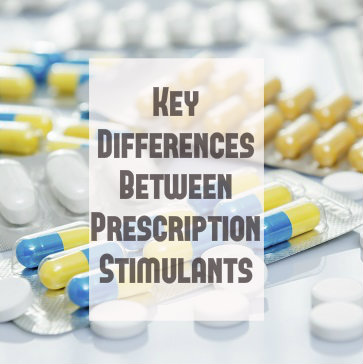 Amphetamine is a stimulant drug from which all other members of its group are derived. It is the base drug. As a stimulant, amphetamine acts on the central nervous system. It is most often prescribed for children with ADHD. It helps them to focus. Amphetamine is commonly abused by high school and college students as a study aid. It produces wakefulness and focus, which makes it a desirable tool for studying long hours. The risks, however, are great. Amphetamine causes side effects like nausea, headaches, shaking, insomnia, nervousness and more. It is also highly addictive.
Amphetamine is a stimulant drug from which all other members of its group are derived. It is the base drug. As a stimulant, amphetamine acts on the central nervous system. It is most often prescribed for children with ADHD. It helps them to focus. Amphetamine is commonly abused by high school and college students as a study aid. It produces wakefulness and focus, which makes it a desirable tool for studying long hours. The risks, however, are great. Amphetamine causes side effects like nausea, headaches, shaking, insomnia, nervousness and more. It is also highly addictive.
Methamphetamine is similar to amphetamine. Like amphetamine, it is a stimulant that increases wakefulness and alertness. It is less often prescribed for ADHD and in rare cases can be used to treat obese patients. Methamphetamine is prescribed less often than amphetamine because it is more harmful. It can cause lasting damage in the brain with long-term use and is extremely addictive. Because prescriptions for methamphetamine are scarcer, users often get it from amateur meth labs. Abusers of meth use it to get a high rather than to study.
Methcathinone vs. Methamphetamine
Another member of the amphetamine stimulant class of drugs, methcathinone, is similar to methamphetamine. Unlike meth, however, it has no clinical use. It is a Schedule I drug in the U.S. because it is dangerous and addictive. It is not prescribed to treat any medical conditions. Methcathinone is chemically very similar to methamphetamine and is also a stimulant.
Like both amphetamine and methamphetamine, methcathinone suppresses the appetite, increases wakefulness, heart rate and energy, and produces alertness in the user. The sense of euphoria that also comes with taking the drug is the main reason people abuse it. The feeling is described as being less intense than that imparted by methamphetamine. As with methamphetamine, methcathinone causes long-term damage and is highly addictive.
All members of the stimulant class of drugs have potential for abuse, but amphetamine, methamphetamine, and increasingly methcathinone are among the most common. Teens and young adults are often drawn to these drugs for either the high, the potential for a study aid, or both. Adults and parents should be aware of these drugs and the harm that they can cause.
If You Or Someone You Love Is Struggling With Stimulant Abuse, Call Us Now – Help Is Available 24/7
The problem of prescription drug abuse is one that touches almost everyone in some way. Millions of Americans have abused prescription drugs and are at risk of becoming addicted or even of having a fatal overdose. Teens are particularly vulnerable and don’t always understand the dangers associated with prescriptions. Teens today are abusing prescription drugs in greater numbers than any other age group. Learn how to keep your teen safe in the face of this epidemic.
Which Drugs Are Teens Abusing?
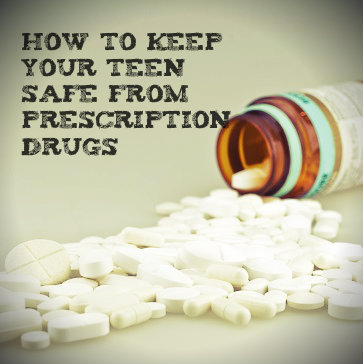 Teens are abusing prescription painkillers in record numbers. These are narcotic controlled substances and are highly addictive and easy to overdose on. In the last 20 years, the number of people between the ages of 12 and 17 that abuse these painkillers has increased ten-fold. No teen demographic is excluded from these statistics. Teens from all socioeconomic backgrounds, of all races, and of both genders are abusing painkillers.
Teens are abusing prescription painkillers in record numbers. These are narcotic controlled substances and are highly addictive and easy to overdose on. In the last 20 years, the number of people between the ages of 12 and 17 that abuse these painkillers has increased ten-fold. No teen demographic is excluded from these statistics. Teens from all socioeconomic backgrounds, of all races, and of both genders are abusing painkillers.
The other category of prescription drugs being abused by teens is stimulants. Stimulant medications are typically amphetamines prescribed for children with attention deficit hyperactivity disorder, or ADHD. Teens abuse them mostly as study aids. They have the effect of keeping the user awake and allowing for more focus and concentration. In a competitive academic world, many teens turn to these drugs to get better grades. The risks are high, of course, and include addiction, long-term health consequences and overdose.
How Can I Keep My Teen Safe From Prescription Drugs?
One of the scariest aspects of the trend in teen prescription drug abuse is that parents are largely unaware of the problem. As many as one in ten teens abuses stimulants, yet most parents have no idea what’s going on. How can you keep your teen safe when you don’t know there is a problem? The first thing you can do to protect your teen is to get to know his activities. By developing an open, communicative and trusting relationship with your teen you will be better tuned in to what is going on with him. You will be more likely to notice if something seems off, which could be attributed to drug abuse.
As you educate yourself about prescription drug abuse, also educate your teen. Knowledge is power and many teens abuse these drugs thinking that they are mostly harmless. If doctors prescribe them, sometimes even to kids, they must be safe, right? This attitude is dangerous. Learn about the risks of taking these medications without a doctor’s supervision and share what you learn with your teen.
It is also important that you minimize your teen’s access to drugs. There are many reasons teens abuse drugs, but one reason they may turn to these prescriptions more than most other substances is access. Most people abusing prescription drugs get them from a friend or family member. If anyone in your family has been prescribed a painkiller or stimulant, make sure it is kept in a secure location that your teen cannot access. Teens also get prescriptions from illegal online pharmacies that don’t check for prescriptions. Control your teen’s access to the Internet and check his history from time to time.
The problem of prescription drug abuse is a serious and ongoing one, for both adults and teens. To keep your teen safe from the epidemic of prescription abuse you need to be aware and knowledgeable. Talk to your teen and make sure he knows that he can come to you with problems. Discuss the risks of abusing drugs and restrict his access to them; take these important steps to reduce the chances that he will experiment with prescriptions.
If You Suspect Your Teen Is Abusing Prescription Drugs – Don’t Hesitate – Call Us Now!
19 Jun 2014
What’s The Deal With Seniors And Drug Abuse?
Thinking about drug abuse, you probably picture younger people popping pills, shooting up or smoking. What is difficult is to imagine is that there is a rising problem among older adults when it comes to drug abuse. The main culprits are prescription medications. Just because a doctor prescribes them does not mean these drugs are always safe. Many prescriptions are susceptible to abuse and it is not only younger people who have used them inappropriately. In fact, surveys show that abuse among older Americans is on the rise. If you care for an older family member be aware of the issue so you can intervene if necessary.
What Are The Dangers For Seniors Abusing Prescriptions?
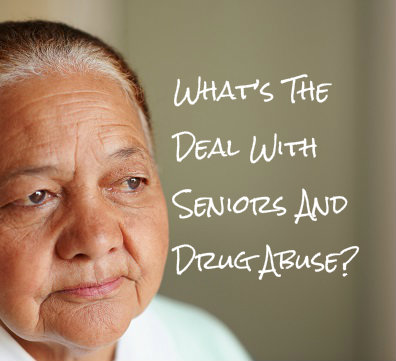 There are several prescription medications that people abuse because of the feelings they impart. For many, the abuse starts slowly and seems harmless. Just how dangerous are these medications when taken against a doctor’s direction? It depends on the medication, but with any drug the side effects will be amplified and intensified when more than the recommended dose is taken.
There are several prescription medications that people abuse because of the feelings they impart. For many, the abuse starts slowly and seems harmless. Just how dangerous are these medications when taken against a doctor’s direction? It depends on the medication, but with any drug the side effects will be amplified and intensified when more than the recommended dose is taken.
For seniors there are particular risks associated with abusing medications. Your older loved one is likely taking several medications. When she abuses one or more of them she increases the risk of a dangerous interaction between two or more medications. She may also have more health problems that could be exacerbated by taking too much of one medication. Of course, at any age there is the very real possibility that drug abuse could lead to addiction.
Which Prescriptions Are Addictive?
Any medication that has addictive potential can be abused. These drugs all give the user a pleasant feeling, which is why they can lead to dependence. Be aware of the medications your loved one is using and educate yourself as to their risks and addictive potential. There are three main classes of drugs that are most often abused: depressants, stimulants and opioids.
Depressants, also known as sedatives, have a relaxing effect on the body. For seniors, the most likely type of depressant to be prescribed is a sleep aid. Stimulants have the opposite effect. They cause wakefulness and alertness and are most commonly prescribed as ADHD medications. Your older friend is unlikely to be prescribed a stimulant. Of greatest concern may be the opioids. These are painkillers that also produce a high when taken in larger doses. Codeine, morphine, oxycodone, hydrocodone, fentanyl and hydromorphone are examples of prescribed opioids.
What Are The Signs Of Abuse?
If you have an older adult in your care, or are concerned about a parent or friend who takes prescription medications, watch out for signs of drug abuse. Look for signs of intoxication. For example, if she slurs her speech, stumbles or falls more often, or if her behavior in general seems off to you, she may be under the influence.
Also look for other signs that may be subtler, such as changes in behavior or routine. She may experience a change in sleeping habits or appetite as a result of abusing medications. You may also observe increasing irritability or confusion. She may act suspiciously as well. For instance, she might make multiple appointments with different doctors in order to get more prescriptions or start going to different pharmacies to avoid suspicion.
Some of these signs of drug abuse may also indicate a new or worsening health problem. In either instance, you should be concerned for the senior in your care. Start a conversation with her and encourage her to see her doctor to discuss options for dealing with the issue.
Read More About Seniors And The Surge In Substance Abuse – And Help Your Loved One Today!
At one time Oklahoma ranked number one in prescription drug abuse. After implementation of a statewide prescription drug monitoring program (PDMP) and the concerted efforts of lawmakers and law enforcement the state has moved down the list to number eight in the nation. But Oklahoma is not satisfied and continues to try and overcome the scourge of prescription drug abuse.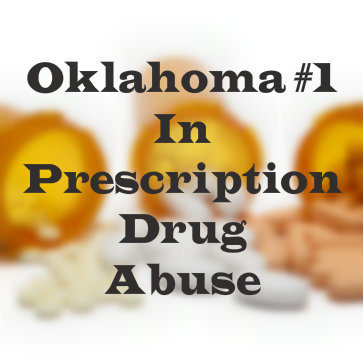
How Big Is The Prescription Drug Problem?
Last year in Oklahoma doctors and medical professionals wrote 10 million prescriptions for powerful opioid painkillers and other scheduled drugs. Those prescriptions were written to 142,369 patients, which averages out to 68 prescriptions per patient. Pharmacists filled those prescriptions with 597 million pills.
The detailed information is available thanks to the state’s PDMP, which electronically records the data. The hope is that doctors would look online before writing a prescription to see how often each patient has been given a script for heavy-duty medication. But reviewing the data it became evident that few doctors, just one-fourth, were using the PDMP prior to writing prescriptions for patients. Doctors are not yet legally required to check the PDMP first, but that could change.
Death Toll Rising
In 2012 there were 844 fatal overdoses in Oklahoma. That means that year more people died from drugs than were killed in car crashes, at 708. The majority of drug overdoses were accidental, and 75 percent involved prescription drugs.
The most dangerous prescription drugs in terms of overdose risk are opioids (e.g.: Vicodin, Lortab, OxyContin, Percocet), and the anti-anxiety medication Xanax. Too often people mix medications with alcohol, or take multiple meds at the same time. The stats show that two people per day are dying in Oklahoma because of prescription drug overdose. Deaths related to prescription drugs have risen 80 percent there in the past 10 years, and Oxycodone and Hydrocodone deaths in the state have quadrupled in that time.
The problem is most acute among 18- to 25-year-olds with a 10.9 percent abuse rate. Overall, 5.2 percent of Oklahomans over age 11 abuse the medications. Apart from the risk of fatal overdose, another concern about the epidemic of opioid abuse is where it tends to take people. Experts in the state say that around 85 percent of heroin users started out abusing prescription opioids.
Oklahoma is not unique. Across the country abuse of prescription drugs continues to claim a shockingly high number of lives. And where opioid use is beginning to drop, there is the selfsame increase in heroin use. Which makes it that much more important that we stop the problem before it moves to the street. We can monitor and prevent much prescription drug abuse through PDMPs. If we don’t, the problem will quickly transition to street drugs like heroin where monitoring and intervention is far less likely.
The FDA’s approval of a drug it says “will fill an important niche” in the treatment of chronic pain has caused a huge uproar over fears about its potential for abuse.
Zohydro was given the go-ahead in October 2013 for the treatment of moderate-to-severe chronic pain. Developed by the pharmaceutical company Zogenix, Zohydro is composed of an unmixed, undiluted 50-milligram shot of the opioid analgesic hydrocodone, which is the primary ingredient in the well-known and widely prescribed pain-relieving drug Vicodin. Zohydro is approximately five times more potent than Vicodin, however, and according to FDA Commissioner Dr. Margaret Hamburg, it will fill “an important and unique niche” in the crowded prescription painkiller marketplace. Zohydro was released in March, and all patients who receive a chronic pain diagnosis will now be eligible to obtain a prescription for this powerful narcotic.
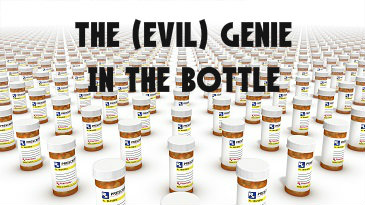 But the FDA’s decision to approve the release of Zohydro was highly surprising, since its own advisory panel had voted 11-2 against approval. The medical authorities appointed to this panel cited the highly addictive nature of opioid medications as the rationale for their thumbs-down verdict. In the months that have passed since the Zohydro ruling, the criticism directed at the FDA has only intensified, and the agency has been forced to repeatedly defend a decision that many see as indefensible.
But the FDA’s decision to approve the release of Zohydro was highly surprising, since its own advisory panel had voted 11-2 against approval. The medical authorities appointed to this panel cited the highly addictive nature of opioid medications as the rationale for their thumbs-down verdict. In the months that have passed since the Zohydro ruling, the criticism directed at the FDA has only intensified, and the agency has been forced to repeatedly defend a decision that many see as indefensible.
Addiction to pharmaceutical-grade painkillers has reached epidemic proportions, and the U.S. Centers for Disease Control has confirmed that opioids like OxyContin and Vicodin are the primary villains in this unfolding tragedy. Many medical professionals apparently came to view these drugs as panaceas and began prescribing them for all degrees of pain and a vast assortment of conditions, and, as a result, opioid addiction rates exploded. Since Zohydro is just a turbo-charged version of Vicodin, it is likely to be far more addictive than its milder cousin, and many medical experts believe it is the height of folly, if not downright hypocritical, for the government to be putting such a potentially dangerous substance into circulation at a time when the fight against prescription drug abuse has just begun to pick up steam.
In September 2013, the FDA announced it was actually tightening label restrictions on opioid painkillers, recommending that physicians use them only with patients who needed round-the-clock treatment for chronic pain and when there were no other viable treatment options available. This action was unequivocally justified as a strategy to combat addiction, so observers were taken aback when only one month later the FDA chose to approve a drug that threatens to accelerate the opioid addiction problem.
Critics of the FDA’s decision launched a campaign to convince the organization to change its minds, and representatives of more than 40 influential healthcare/addiction treatment organizations signed and submitted a letter to the agency that outlined the dangers of adding Zohydro to the menu of available opioid painkillers. But this ardent plea from the experts was to no avail, and the FDA steadfastly refused to reverse its puzzling course.
The (Evil) Genie in the Pill Bottle
The FDA is often accused of having an overly cozy relationship with big pharma and big agriculture, the industries it has been tasked with regulating, and this decision to legalize a new narcotic painkiller despite the negative judgment of its handpicked medical advisors would seem to represent a triumph of favoritism over sensible public policy. In response to what many see as an outrage, separate bills have now been introduced in the House and Senate that if passed would compel the FDA to remove Zohydro from the marketplace.
Compounding the situation, later in the year the drug giant Purdue Pharma will release another single-ingredient/high-dose hydrocodone painkilling drug, in a tamper-resistant form that may render Zohydro obsolete. This company already sells a tamper-resistant version of OxyContin, which allegedly cannot be crushed or dissolved for chewing or snorting and therefore is not supposed to be as addictive (chewing or snorting opioids delivers a more concentrated dosage to the bloodstream). A less malleable form of mega-jolt hydrocodone would presumably offer the same advantages, and the folks manufacturing Zohydro would likely have to switch to a tamper-resistant form themselves if they expected their drug to survive.
But addiction treatment specialists dispute the notion that making addictive drugs harder to alter makes them less dangerous. They note that virtually every person who has become dependent on opioid painkillers started out swallowing pills and only later resorted to chewing or snorting when their substance abuse problems raged out of control. Nevertheless, many fear the positive PR that tamper-resistant technology has received may help to defuse some of the opposition that this new class of drugs has generated, assuming they do eventually show up on the marketplace in this more “respectable” form.
Read How Big Pharma Is Testing Super Painkillers
05 May 2014
Prevent Prescription Drug Abuse In Your Teen
Prescription drug abuse is a major problem across the U.S. and for people of all age groups. Teens, however, are particularly vulnerable and if you have children you should be aware of the risks and dangers. There are two main kinds of drugs being abused by young people: narcotic painkillers and stimulants. The former are used to get a high, but the latter are often abused as a study aid. Stimulants, like those used to treat ADHD, produce wakefulness and many teens use them to stay up at night for studying.
The statistics regarding teen abuse of prescription drugs are alarming. Since 2008, abuse has risen by 33 percent. The statistics also show that most young people do not believe there are any risks in abusing prescriptions and that parents are largely ignorant when it comes to their children’s abuse of these drugs as well as the risks. Learn how to keep your teen safe.
Where Do Teens Get Prescription Drugs?
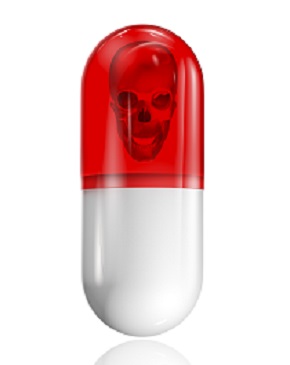 The first line of defense against abuse of prescriptions by your teen is to limit her access to them. So where are teens getting these medications? The most common location for teens to find prescriptions is the medicine cabinet. Teens get drugs right from their own homes. If they can’t find them there, they turn to their friends’ medicine cabinets. Many people are prescribed narcotics and stimulants, so finding them in homes is not difficult.
The first line of defense against abuse of prescriptions by your teen is to limit her access to them. So where are teens getting these medications? The most common location for teens to find prescriptions is the medicine cabinet. Teens get drugs right from their own homes. If they can’t find them there, they turn to their friends’ medicine cabinets. Many people are prescribed narcotics and stimulants, so finding them in homes is not difficult.
If the drugs cannot be pilfered, your teen can most likely buy them. Buying and selling prescriptions in high schools are common. Your teen may also be able to purchase medications online. Illegal pharmacies will not hesitate to sell to a teen.
How Can I Limit My Teen’s Access To Prescriptions?
With prescription medications so prevalent in homes, at schools and online, you need to be especially vigilant to restrict your teen’s access. If you have prescriptions in your home, keep them in a locked cabinet. If your teen has been prescribed one of these commonly abused medications, keep it locked up and dose it out to her as directed by her doctor. A common source for stolen medications is expired pills that have been forgotten or thrown in the trash. Be aware of your unused drugs, keep track of them and dispose of them properly.
Unfortunately, limiting your teen’s access to drugs at home is where your control ends. You cannot control her access at school or at friends’ houses. What you can do, though, is educate your teen about the risks and dangers of drug abuse. First read up for your own knowledge and then talk to your children about how harmful prescriptions can be. Although they are legal and prescribed by doctors, these factors do not mean they are safe for everyone.
It is also important to educate your family and friends about prescriptions and keeping them under control. Your teen may be able to find drugs at a grandparent’s house or any other family member’s, but if everyone kept tighter control of their medications, fewer drugs would end up on the black market.
Finally, it’s important that you maintain a close and open relationship with your teen. The more time you spend interacting and talking, the more able you will be to detect when something is wrong or if she is showing signs of abusing drugs. This healthy relationship will also mean that your teen will be more likely to come to you with questions, concerns, and problems related to drugs and drug abuse.
Texting is quickly replacing phone calls. Now the Drug Enforcement Administration (DEA) has decided to turn the texting craze into the latest weapon in the DEA’s fight against prescription drug abuse.
The administration has developed a new initiative called TIP411 which launched in late February in the state of Georgia. Anyone in the public who observes suspicious behavior, especially those who work in pharmacies, can now text a message to TIP411 (847-411) along with the phrase PILLTIP to alert DEA agents.
The Need For Better Prescription Drug Monitoring
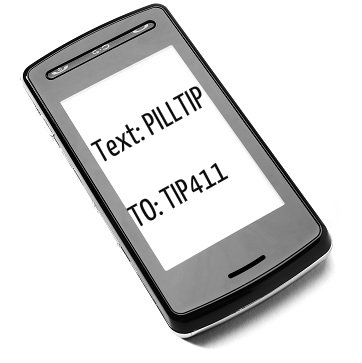 The U.S. Centers for Disease Control and Prevention (CDC) report that prescription drugs are largely behind a tripling of overdose rates in the nation since 1990. In 2008 more Americans died from taking prescription pain relievers (usually opioids) than those who died because of heroin or cocaine use. The glut of prescription drugs, and opioid pain relievers in particular, has almost certainly exacerbated the problem. According to the CDC since 1999 there has been a 300 percent rise in the sale of these potent drugs. Having so many pills out there among the public makes it all-too-easy for abuse to take hold.
The U.S. Centers for Disease Control and Prevention (CDC) report that prescription drugs are largely behind a tripling of overdose rates in the nation since 1990. In 2008 more Americans died from taking prescription pain relievers (usually opioids) than those who died because of heroin or cocaine use. The glut of prescription drugs, and opioid pain relievers in particular, has almost certainly exacerbated the problem. According to the CDC since 1999 there has been a 300 percent rise in the sale of these potent drugs. Having so many pills out there among the public makes it all-too-easy for abuse to take hold.
Most often, people obtain the drugs simply by raiding the family medicine shelf. Others buy them from friends who had a legitimate prescription from their doctor. The 2010 National Survey on Drug Use and Health found that just 2.3 percent of prescription drug abusers get their drugs from a stranger or the local drug dealer.
Eventually legitimate prescriptions run out and addicts must find another source. Sometimes prescriptions are forged, complete with fake callback numbers. Other times they doctor shop, which entails making appointments with several physicians and describing symptoms at each office in search of multiple prescriptions for painkillers. When all of these sources fail users frequently turn to heroin, which is in the same drug family as prescription opioids.
In conjunction with the launch of the text tip line, the DEA also mailed out printed materials to 1,200 Atlanta pharmacies. The materials tell pharmacy employees and pharmacists what signs to look for and how to use the tip line.
Pharmacists and employees are told to be aware of how often people refill their prescriptions. They are also warned to be suspicious when a person is holding a prescription for both a depressant and for a stimulant. Handwriting that’s too legible is another red flag.
Can The Text Line Be Fraudulently Used To Obtain Drugs?
There have been instances when users call the pharmacy impersonating a physician. However, opioids require the doctor to give his or her personal drug number proving they are licensed to dispense drugs. And some drugs cannot be prescribed over the phone. Attempts to phone in prescriptions without a proper drug number, or asking for written-prescription-only meds, should sound a warning bell.
In some cases an hourly employee at the pharmacy may be driving a luxury vehicle or taking exotic vacations. This should spark interest. On the other hand, pharmacists themselves have been known to hand out drugs in exchange for sexual favors. The DEA hopes that inviting hens to keep an eye on the hen house will yield some useful information.
While Georgia is one of the first areas in the country to implement TIP411, a similar program is being tested in Philadelphia. Wherever it is used, DEA agents say they don’t expect to get a large number of tips, but they’re hopeful that what does come through will prove fruitful.


